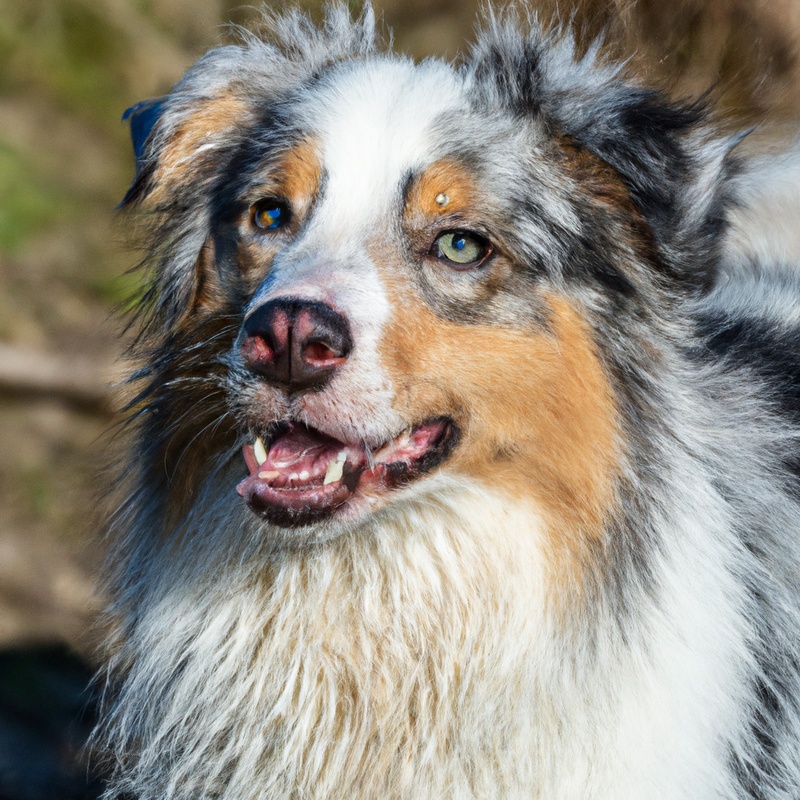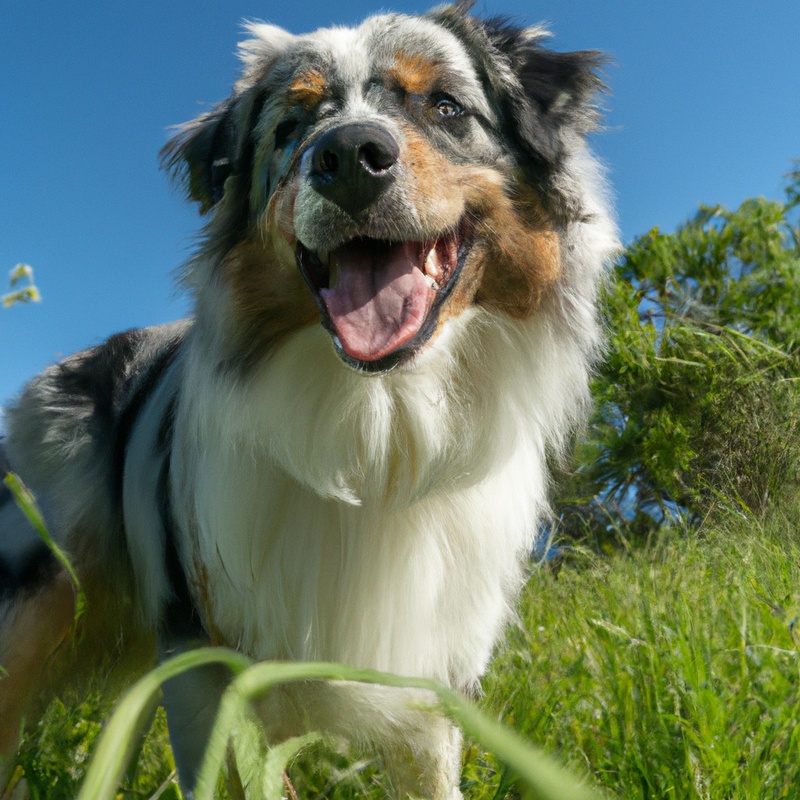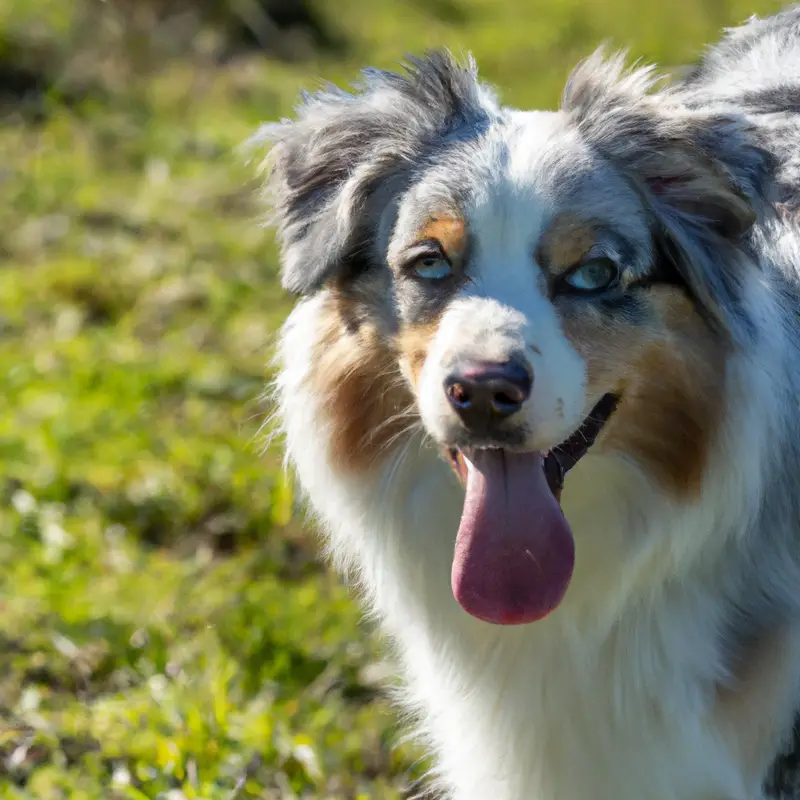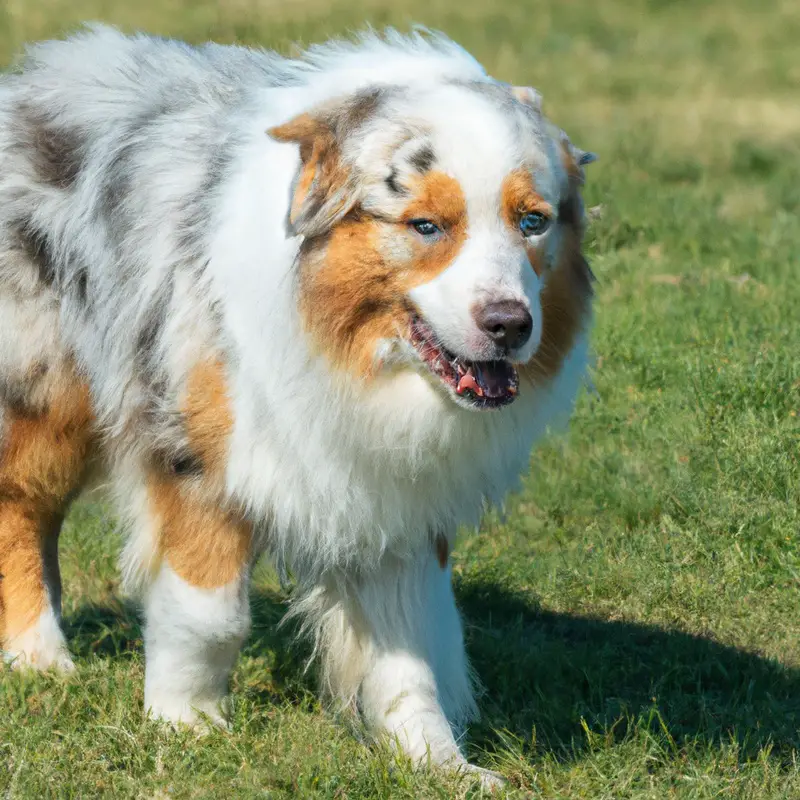What Are The Best Training Methods For Teaching An Australian Shepherd To Shake Paws?
Key Takeaways:
- Positive reinforcement is the most effective training method for teaching an Australian Shepherd to shake paws.
- Breaking down the behavior into smaller steps and gradually building them up is crucial for successful training.
- Repetition and consistency are key to reinforcing the desired behavior.
- Patience and understanding the individual dog’s learning style are important for achieving success in training an Australian Shepherd to shake paws.
Are you eager to teach your Australian Shepherd a fun and impressive trick? Look no further! In this article, I’ll share with you the best training methods to teach your Australian Shepherd how to shake paws.
As a dog lover and experienced trainer, I understand the unique characteristics of this breed and the importance of effective training.
We’ll explore positive reinforcement and clicker training approaches, as well as other methods to consider. Get ready to bond with your furry friend and amaze your family and friends with this adorable trick!
| Training Method | Description |
| 1. Positive Reinforcement | A method that rewards the dog with treats or praise whenever they correctly shake paws. This encourages the dog to repeat the behavior. |
| 2. Clicker Training | Using a clicker to mark the desired behavior (shaking paws) and then rewarding the dog. This helps the dog associate the click with the correct behavior. |
| 3. Shaping | This method involves breaking down the behavior (shaking paws) into small steps and rewarding the dog for each step until they can perform the whole behavior. |
| 4. Target Training | Teaching the dog to touch a target object with their paw and then gradually shaping the behavior to shaking paws. |
| 5. Verbal Cue and Hand Signal | Pairing a verbal cue like “shake” with a hand signal, such as extending your hand towards the dog, to indicate the desired behavior. |
Understanding the Australian Shepherd breed
The Australian Shepherd is a highly intelligent and active breed of dog. They are known for their herding abilities and high energy levels.
Aussies are loyal and make great companions, but they require mental and physical stimulation to stay happy and balanced.
Understanding their breed characteristics is essential for successful training.

Importance of training for Australian Shepherds
Characteristics of Australian Shepherds relevant to training
Australian Shepherds have certain characteristics that make them excellent candidates for training. They are highly intelligent, which means they are quick to learn new commands and tricks.
Their eagerness to please their owners also makes them very responsive during training sessions.
Additionally, Australian Shepherds are known for their high energy levels, which can be channeled effectively through training exercises. Finally, their herding instincts can be harnessed during training, as they are naturally inclined to follow commands and work in a structured environment.
These characteristics make Australian Shepherds highly trainable and adaptable to various training methods and techniques.

Benefits of training for Australian Shepherds
Training is highly beneficial for Australian Shepherds. Firstly, it helps in developing a strong bond between the owner and the dog.
Through training sessions, you can establish trust and communication with your Australian Shepherd.
Secondly, training promotes mental stimulation, which is essential for this intelligent and active breed. It helps prevent behavioral issues that may arise from boredom or lack of mental challenges.
Thirdly, training allows you to teach your Australian Shepherd basic obedience commands, making them well-behaved and easier to manage in various situations.
Additionally, training helps in socializing your dog with other animals and people, ensuring they are comfortable and friendly in different environments. Overall, training is an investment in your dog’s well-being and will lead to a happier and more fulfilling life for both you and your Australian Shepherd.
Common challenges in training Australian Shepherds
Training Australian Shepherds can be a rewarding experience, but it also comes with its fair share of challenges. One common challenge is their high energy level.
Australian Shepherds are an active and intelligent breed, so keeping them engaged and focused during training sessions can be a bit tricky.
Additionally, their herding instinct can sometimes lead them to nip or chase after people or animals, which needs to be addressed through proper training techniques. Another challenge is their independent nature.
They are known for their strong will and can sometimes be prone to stubbornness, which may require extra patience and persistence during training.
Lastly, Australian Shepherds can be sensitive to correction or punishment, so it’s important to use positive reinforcement methods and avoid harsh training techniques. Overall, understanding these challenges and tailoring your training approach accordingly will set you and your Australian Shepherd up for success.
Key considerations before starting paw shaking training
Before starting paw shaking training with your Australian Shepherd, it’s important to consider a few key factors. First, make sure that your dog is physically and mentally ready for training.
Assess their overall health and energy levels to ensure they can actively participate in the training sessions.
Next, set clear goals and expectations for the training. Decide how you want your Australian Shepherd to perform the paw shaking behavior and establish a timeline for achieving this skill.
This will help you stay focused and organized throughout the training process.
Consider your dog’s temperament and personality traits. Australian Shepherds are known for their intelligence and high energy levels, so it’s important to choose a training approach that matches their needs.
Positive reinforcement methods, like using treats or rewards, are usually effective with this breed.
Another crucial consideration is the training environment. Find a quiet and distraction-free area where you can work with your Australian Shepherd without any interruptions.
This will help them stay focused and engaged during the training sessions.
Lastly, remember to be patient and consistent. Training takes time and repetition, so stay committed to the process.
Avoid punishment or negative reinforcement, as this can cause anxiety or confusion in your dog.
Instead, focus on rewarding and reinforcing desired behaviors. By keeping these key considerations in mind, you’ll be well-prepared to start paw shaking training with your Australian Shepherd.
Good luck and enjoy the journey of training your furry friend!

Positive reinforcement training approach
Basics of positive reinforcement training
Positive reinforcement training is a highly effective and humane approach for training dogs, including Australian Shepherds. This method focuses on rewarding desired behaviors rather than punishing unwanted behaviors.
It involves using treats, praise, and other rewards to reinforce good behavior.
The basics of positive reinforcement training involve setting clear and consistent expectations for your Australian Shepherd. Start by choosing a specific behavior you want to teach, such as shaking paws.
Break down the behavior into small steps and reward your dog for each successful attempt.
Consistency is key in positive reinforcement training. Use a clicker or a specific word, like “yes,” to mark the desired behavior in the exact moment it happens.
Follow the marker with a reward, such as a treat or verbal praise, immediately after.
This helps your Australian Shepherd make the association between the behavior and the reward. Timing is crucial in positive reinforcement training.
Make sure you reward your dog within a few seconds of them performing the desired behavior.
This helps them understand which behavior is being reinforced. If you wait too long, your dog may not make the connection.
Remember to keep training sessions short and fun.
Australian Shepherds are intelligent and energetic, so they respond well to engaging and interactive training. End each session on a positive note, even if progress is slow.
Consistency and patience are key to success.
Lastly, choose treats or rewards that your Australian Shepherd finds highly motivating. This could be small pieces of chicken, cheese, or their favorite doggy snack.
Experiment with different rewards to find what works best for your dog.
By focusing on positive reinforcement and following these basic principles, you can effectively teach your Australian Shepherd to shake paws and other desired behaviors. Training should be a positive experience for both you and your furry friend, strengthening the bond between you.
Step-by-step guide for teaching paw shaking using positive reinforcement
Teaching your Australian Shepherd to shake paws using positive reinforcement is a great way to bond with your furry friend. Here is a simple step-by-step guide to help you with the training process:
- Start by gathering some small, soft treats that your dog loves. These will be used as rewards during the training.
- Begin the training in a quiet and distraction-free environment. This will make it easier for your dog to focus on the task at hand.
- Hold a treat in your hand and show it to your dog. When your dog sniffs or touches your hand with their paw, reward them with praise and give them the treat.
- Repeat this process multiple times, gradually adding a verbal cue such as “Shake” or “Paw” while your dog performs the action.
- Once your dog understands the association between the verbal cue and the action, begin phasing out the treat. Instead, reward them with verbal praise and a pat on the head when they successfully shake paws.
- Practice the paw shaking command in different locations and with increasing distractions to help generalize the behavior.
- Be consistent and patient throughout the training process. Remember that positive reinforcement works best when you reward your dog for correct behaviors and ignore or redirect them for incorrect behaviors.
Recommended treats and rewards for positive reinforcement
When it comes to positive reinforcement training, using the right treats and rewards can make all the difference. For Australian Shepherds, it’s important to choose treats that are both enticing and healthy.
Small, soft, and easily chewable treats work well for training sessions.
You can try using small pieces of chicken, cheese, or commercially available training treats specifically designed for dogs. Additionally, consider using verbal praise, petting, or a favorite toy as rewards to mix things up and keep your Australian Shepherd engaged.
Remember to always choose treats and rewards that your dog finds highly motivating – it will make the training process much more effective and enjoyable for both of you!
Clicker training approach
Overview of clicker training method
Clicker training is a popular and effective method for training dogs, including Australian Shepherds. It involves using a small device called a clicker to mark the desired behavior.
When the dog performs the behavior, you immediately click the clicker and then give them a treat as a reward.
Over time, the dog learns to associate the sound of the clicker with positive reinforcement. The clicker is a powerful tool because it provides a clear and consistent signal to the dog.
It allows you to communicate exactly which behavior you want to reinforce.
The sound of the clicker is unique and doesn’t vary in tone or volume like our voice might, so it eliminates any confusion for the dog. To start clicker training, you first need to “charge” the clicker.
This means that you pair the sound of the clicker with a treat, so that the dog understands that the clicker means they did something right.
You can do this by clicking the clicker and then immediately giving the dog a treat. Repeat this several times until the dog starts to associate the clicker with the treat.
Next, you can use the clicker to mark and reinforce the behavior you want to teach, in this case, shaking paws.
You would click the clicker as soon as the dog lifts their paw to shake, and then give them a treat. With repetition and consistent reinforcement, the dog will learn to associate the behavior of shaking paws with the clicker and the reward.
It’s important to time your clicker use accurately.
The click should come immediately after the dog performs the desired behavior, so they understand what it is they’re being rewarded for. Also, be consistent in your rewards and always follow the click with a treat.
This reinforces the positive association and motivates the dog to continue performing the behavior.
Overall, clicker training is a versatile and effective method for training Australian Shepherds, and can be used for a variety of behaviors. It encourages a positive and engaging training experience for both you and your dog.
Step-by-step guide for teaching paw shaking using clicker training
Teaching your Australian Shepherd to shake paws using clicker training can be a fun and effective method. Here’s a step-by-step guide to help you get started:
- Prepare your clicker and treats: Before you begin training, make sure you have a clicker and some small, tasty treats handy. The clicker will serve as a signal to your dog that they have performed the desired behavior correctly, and the treats will be used as a reward.
- Introduce the clicker: Start by associating the sound of the clicker with a reward. Simply click the device and immediately give your dog a treat. Repeat this several times to establish the connection between the click and the reward.
- Begin the training: With your dog in a calm and focused state, gently take their paw into your hand and say the command, such as “Shake” or “Paw.” As soon as your dog lifts their paw even slightly, click the clicker and reward them with a treat.
- Practice repetition: Repeat the previous step multiple times, allowing your dog to become familiar with the command and the action of lifting their paw. Be patient and give them time to understand what you’re asking of them.
- Add the verbal cue: As your dog becomes more comfortable with lifting their paw, start adding the verbal cue before giving the command. For example, say “Shake” or “Paw” and wait for your dog to respond. Click and reward when they lift their paw.
- Gradually reduce physical assistance: Over time, start to decrease the physical assistance you provide. Instead of holding your dog’s paw, simply extend your hand and wait for them to offer their paw on their own. Remember to click and reward when they do so.
- Generalize the behavior: Once your dog consistently offers their paw when asked, start practicing in different locations and with different people. This will help them understand that the behavior is expected in various situations.
- Maintain consistency: Consistency is key in training. Practice the paw shaking command regularly, even after your dog has mastered it. This will reinforce their understanding and ensure they don’t forget the behavior.
Remember, clicker training relies on positive reinforcement, so always reward your dog for their efforts and progress. With patience, consistency, and plenty of praise, your Australian Shepherd will soon master the paw shaking command using clicker training.
Effective clicker use and timing
Effective clicker use and timing are essential for successful training with Australian Shepherds. To use a clicker effectively, you need to pair the sound of the click with a reward, such as a treat or praise.
This helps your dog understand that the click indicates they have done something right.
Each time your dog performs the desired behavior, click and immediately give them a reward. Timing is crucial when using a clicker.
Make sure you click the moment your dog does the desired behavior, so they can make the connection between the behavior and the reward.
If you click too late or too early, it can confuse your dog and make training less effective. Remember to be consistent with your clicker use and only click for the specific behavior you are trying to teach.
Clickers are a powerful tool in training, but they must be used correctly and in conjunction with positive reinforcement.
Practice timing and accuracy to strengthen the bond between the click, the behavior, and the reward.
Other training methods to consider
Target stick training method for teaching paw shaking
Target stick training is a highly effective method for teaching an Australian Shepherd to shake paws. It involves using a target stick, which is a long stick or wand with a distinctive target at the end.
To begin, hold the target stick near your dog’s paw and say a command, such as “shake.” When your dog touches their paw to the target, reward them with a treat and praise.
Repeat this process several times, gradually moving the target stick closer to your dog’s face. Once your dog is consistently touching the target with their paw, you can begin to shape the behavior of lifting their paw off the ground.
Hold the target stick slightly higher and reward your dog when they lift their paw in the direction of the target.
Continue to reinforce this behavior, gradually reducing the presence of the target stick until your dog can shake paws on command without it. Remember to always reward and praise your dog for their successful attempts.
Target stick training is a positive and fun method that engages your dog’s natural instinct to follow and target objects.
It allows for clear communication between you and your Australian Shepherd, making the training process more enjoyable for both of you. Give it a try and watch your dog master the paw shaking trick!
Capturing method for teaching paw shaking
The capturing method is an effective way to teach an Australian Shepherd to shake paws. It involves capturing the behavior naturally when the dog offers it on their own.
When your Australian Shepherd raises their paw, you immediately reward and reinforce the behavior with praise or a treat.
Over time, your dog will associate the action of raising their paw with the reward, and they will learn to offer the behavior more consistently. To start using the capturing method, keep your treats or reward handy and observe your dog closely.
When your Australian Shepherd naturally lifts their paw, say a command like “shake” or “paw” and reward them immediately.
Repeat this process each time your dog raises their paw, making sure to use the same command consistently. With practice, your dog will begin to associate the command with the action of shaking paws.
Remember to be patient and consistent during the capturing method.
It may take some time for your Australian Shepherd to understand what you want, so it’s important to keep the training sessions short and positive. Soon enough, your furry friend will be shaking paws like a pro! Some tips and tricks for successful capturing training include:
- Using high-value treats or rewards to motivate your Australian Shepherd
- Practicing in a quiet and distraction-free environment initially
- Gradually introducing distractions to help your dog generalize the behavior
- Praising and rewarding your dog consistently when they offer the paw shaking behavior
Keep in mind that every dog is unique, and the capturing method may work better for some Australian Shepherds than others. Don’t hesitate to seek professional help if you’re facing challenges or want additional guidance in teaching your dog to shake paws.
Shaping method for teaching paw shaking
Shaping is a highly effective training method for teaching an Australian Shepherd to shake paws. With shaping, you can break down the behavior into smaller steps and reinforce each step along the way.
Here’s how you can use shaping to teach paw shaking:
- Start by reinforcing any interaction your dog makes with their paw, such as touching it to the ground or lifting it slightly.
- Gradually increase your criteria, reinforcing only the moments when your dog lifts their paw higher or holds it for longer.
- Continue shaping the behavior by reinforcing your dog for lifting their paw towards your hand or extending it towards you.
- Once your dog consistently lifts their paw towards your hand, start reaching out your hand and adding a verbal cue like “shake.”
- Finally, reinforce your dog every time they make physical contact between their paw and your hand and continue to practice to solidify the behavior.
Remember to be patient and consistent with shaping. It may take some time for your Australian Shepherd to understand what you’re asking for.
Use high-value treats or rewards to motivate your dog and celebrate their success.
Keep training sessions short and positive to maintain their interest and enthusiasm. With consistent practice and positive reinforcement, shaping can be a highly effective method for teaching an Australian Shepherd to shake paws.
Happy training!
Tips and tricks for successful training
Consistency and patience in training Australian Shepherds
Consistency and patience are key when training Australian Shepherds. These intelligent dogs thrive on routine and need clear and consistent instructions.
It’s important to use the same commands and cues consistently and to provide regular practice sessions.
Be patient with your Australian Shepherd and give them time to understand and learn new behaviors. Rushing the training process can lead to frustration for both you and your dog.
Consistency and patience will help build a strong foundation for successful training with your Australian Shepherd.
Setting realistic goals and expectations
Setting realistic goals and expectations is essential when training an Australian Shepherd to shake paws. It’s important to understand that each dog learns at their own pace, so don’t expect immediate results.
Start with small, achievable goals and gradually increase difficulty as your dog progresses.
Remember to be patient and consistent throughout the training process. Avoid becoming frustrated if your dog doesn’t grasp the concept right away.
Celebrate even the smallest successes and continue to reinforce the behavior positively.
With time and dedication, your Australian Shepherd will learn to shake paws reliably.
Avoiding punishment and negative reinforcement
When training an Australian Shepherd to shake paws, it’s important to avoid punishment and negative reinforcement. Punishment can create fear and anxiety in your dog, making training sessions less effective.
Instead, focus on positive reinforcement methods, which involve rewarding desired behaviors.
By using treats, praise, and other rewards, you can encourage your Australian Shepherd to learn and perform the desired behavior, such as shaking paws, willingly and happily. Positive reinforcement strengthens the bond between you and your dog and promotes a positive learning environment.
So, be patient, consistent, and always focus on positive reinforcement during training sessions.
Recognizing and addressing distractions during training
During training sessions, it’s important to be aware of and manage distractions that may arise. Dogs, especially Australian Shepherds, can easily get distracted by their surroundings.
To recognize distractions, pay attention to your dog’s behavior.
Look for signs of restlessness, wandering eyes, or sniffing the ground. When you notice a distraction, address it immediately by redirecting your dog’s focus back to the training task.
You can use treats or toys to regain their attention.
Consistency and patience are key in successfully addressing distractions during training.
Seeking professional help when needed
Signs to consider professional training assistance
Signs to consider professional training assistance include:
- Lack of progress: If you have been consistently working with your Australian Shepherd to teach them to shake paws, but they are not making any progress or seem to be struggling, it might be time to seek professional help. A professional trainer can provide guidance and support to overcome any training obstacles.
- Behavioral issues: If your Australian Shepherd is displaying aggressive or destructive behavior during training sessions, it is important to consult with a professional trainer. They can help address underlying behavioral issues and provide strategies to manage and modify your dog’s behavior.
- Safety concerns: If your Australian Shepherd’s behavior poses a safety risk to themselves or others, it is crucial to seek professional assistance. A professional trainer can assess the situation and provide techniques to ensure the safety of everyone involved.
- Lack of experience: If you are new to dog training or unsure how to effectively teach your Australian Shepherd to shake paws, professional training assistance can be invaluable. Trainers have the knowledge and expertise to guide you through the process and help you achieve your training goals.
- Specific training needs: If you have specific training goals or need assistance with advanced commands, such as teaching your Australian Shepherd to shake paws in a specific way, a professional trainer can provide the specialized guidance and support you need.
- Personal circumstances: If you have limited time or physical capabilities that make it challenging for you to train your Australian Shepherd effectively, seeking professional assistance can ensure that your dog receives the training they need without adding unnecessary stress or strain on yourself.
Remember, professional training assistance can be a valuable resource when faced with training challenges or when you want to achieve specific goals with your Australian Shepherd. It is important to choose a reputable trainer or training class that aligns with your training philosophy and values.
Choosing a reputable dog trainer or training class
When it comes to choosing a reputable dog trainer or training class for your Australian Shepherd, there are a few key factors to consider. First and foremost, you want to find a trainer who has experience specifically with Australian Shepherds or herding breeds.
Look for trainers who have a good reputation and positive reviews from previous clients.
Additionally, it’s important to find a trainer who uses positive reinforcement methods and focuses on building a strong bond with your dog. Avoid trainers who rely on punishment or harsh training techniques.
Meet with the trainer beforehand to ask questions, observe their training methods, and ensure they align with your goals and values.
Remember, finding the right trainer can make all the difference in the success of your dog’s training journey.
Individualized training plans based on specific needs
Individualized training plans are essential for teaching your Australian Shepherd how to shake paws effectively. Every dog is unique, and their training needs may vary.
To create a personalized plan, consider factors like your dog’s age, temperament, and previous training experience.
Start by assessing your dog’s current skills and abilities. This will help you identify any areas that need improvement and determine the best approach for teaching them to shake paws.
For example, if your dog already knows basic obedience commands, you can build upon that foundation.
Next, set specific goals for your training sessions. Break down the desired behavior into smaller, achievable steps.
This way, you can gradually progress towards the final goal of shaking paws.
Taking small steps will help keep your dog motivated and prevent overwhelm. Consider incorporating different training methods based on your dog’s individual needs.
Positive reinforcement training is a popular approach that rewards good behavior with treats or praise.
Clicker training uses a clicker to signal correct behavior, followed by a reward. Target stick training, capturing, and shaping are other methods you can explore.
Choose training techniques that align with your dog’s learning style and motivation.
Some dogs may respond better to food rewards, while others may be more motivated by play or attention. Pay attention to what gets your dog excited and tailor your rewards accordingly.
Consistency and patience are key when developing an individualized training plan.
Stick to a regular training schedule and be patient with your dog’s progress. Remember, every dog learns at their own pace, so avoid rushing or getting frustrated.
If you’re unsure about the best training methods or feel overwhelmed, consider seeking professional help.
A reputable dog trainer can assess your dog’s individual needs and create a customized training plan that suits both you and your Australian Shepherd. They can provide guidance, support, and expertise every step of the way.
Remember, training your Australian Shepherd to shake paws is a journey that requires time, effort, and understanding.
By creating an individualized training plan and being patient and consistent, you can help your dog master this fun and useful skill. Keep the sessions enjoyable and rewarding, and soon your Australian Shepherd will be shaking paws like a pro.
Final Verdict
As an expert in dog training, I firmly believe that positive reinforcement and clicker training are the best methods for teaching an Australian Shepherd to shake paws. These methods utilize rewards and clear communication to create a positive learning experience for your dog.
By following step-by-step guides and being consistent and patient in your training, you can successfully teach your Australian Shepherd this adorable trick.
Remember to set realistic goals, avoid punishment, address distractions, and seek professional help when needed. With these methods, your Australian Shepherd will be shaking paws in no time! Trust in these effective training methods and watch your Australian Shepherd thrive.







